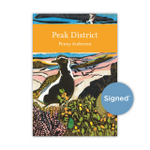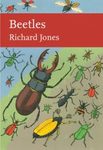Field / Identification Guide
By: Paul Sterry(Author), Paul Stancliffe(Author), Simon Gillings(Illustrator)
320 pages, 1200+ colour photos, colour illustrations, colour distribution maps
![Collins BTO Guide to British Birds Collins BTO Guide to British Birds]()
Click to have a closer look
About this book
Customer reviews
Biography
Related titles
Recommended titles
About this book
In a unique new collaboration, Collins have paired up with the respected British Trust for Ornithology, bringing together the most authoritative and up-to-date information in this new field guide to the common birds of Britain and Ireland. This unique new identification guide features all of the birds that have occurred five or more times in Britain and Ireland, including all species that breed regularly in the region, plus those that winter here, or occur as common passage migrants. Collins BTO Guide to British Birds has been written and illustrated as much with the beginner in mind as the experienced birdwatcher.
Designed to be used in the field, the text and photographs describe and illustrate the key features needed to identify a species with confidence, and to separate it from similar, or 'confusion', species. As a general rule, the species accounts follow the taxonomic running order provided by the British Ornithologist's Union (BOU). But for the benefit of the reader, in some instances the running order has been juggled subtly so that potentially confusing species are placed side by side. Throughout Collins BTO Guide to British Birds there are special pages that describe the key features needed for separating different families, and groups of birds that share the same habitat.
More than 1 200 photographs are featured and many are seen here for the first time. They have been chosen carefully to show not only important identification features but also to give clues to the usual habitat favoured by the bird, and its typical posture. Annotations highlight key identification features that are discussed in the text. Song and call are useful aids to identification, and reference is made to vocalisation for each species. The average size of each bird is included; in most species this is the length, measured from the tip of the bill to the tip of the tail, but in birds that are seen most frequently in flight (such as raptors), the given measurement is wingspan.
Relative abundance maps are shown for every species. The darker shading shows where a species is most abundant, and the lighter shades where it is less so. These are based on the very latest information contained within the BTO's Bird Atlas 2007-11.
Customer Reviews (1)
-
a little disappointing
By
Anthony
8 Jun 2015
Written for Hardback
I have always been on the look out for a good photographic guide to compliment the usual guides illustrated with artwork. When I heard of this book and it's imminent publication I thought my prayers had been answered especially with the claims of showing 'every plumage'. However I now find that this book has fallen in to the old fashion of mainly illustrating each species with an image of a male bird in summer plumage with other plumages – if any – playing second fiddle. This is even the case with birds most usually seen in winter such as the Lapland Bunting. I was hoping that this book would aid in the sexing and aging of birds rather than just the identification of a species but there are no juvenile or eclipse plumages of ducks, no juvenile divers, very few juvenile birds of prey (and no female Sparrowhawk) in fact very few juvenile plumages throughout. The labeling also is rather disappointing – for example, the Reed Bunting shows only two plumages, a male and a female (no juvenile!) but there is no mention as to whether they are in summer or winter plumage. In short, my hunt for a comprehensive photographic guide goes on.
6 of 10 found this helpful
-
Was this helpful to you? Yes No
Biography
Paul Sterry has written and illustrated more than 50 books, including the bestselling Collins Complete British Wildlife and Collins Complete British Birds. Trained as a zoologist, Paul has been a wildlife photographer for over 20 years and regularly undertakes research expeditions. He has worked as a Research Fellow at Sussex University studying freshwater ecology. Paul is a keen birder and conservationist.












































